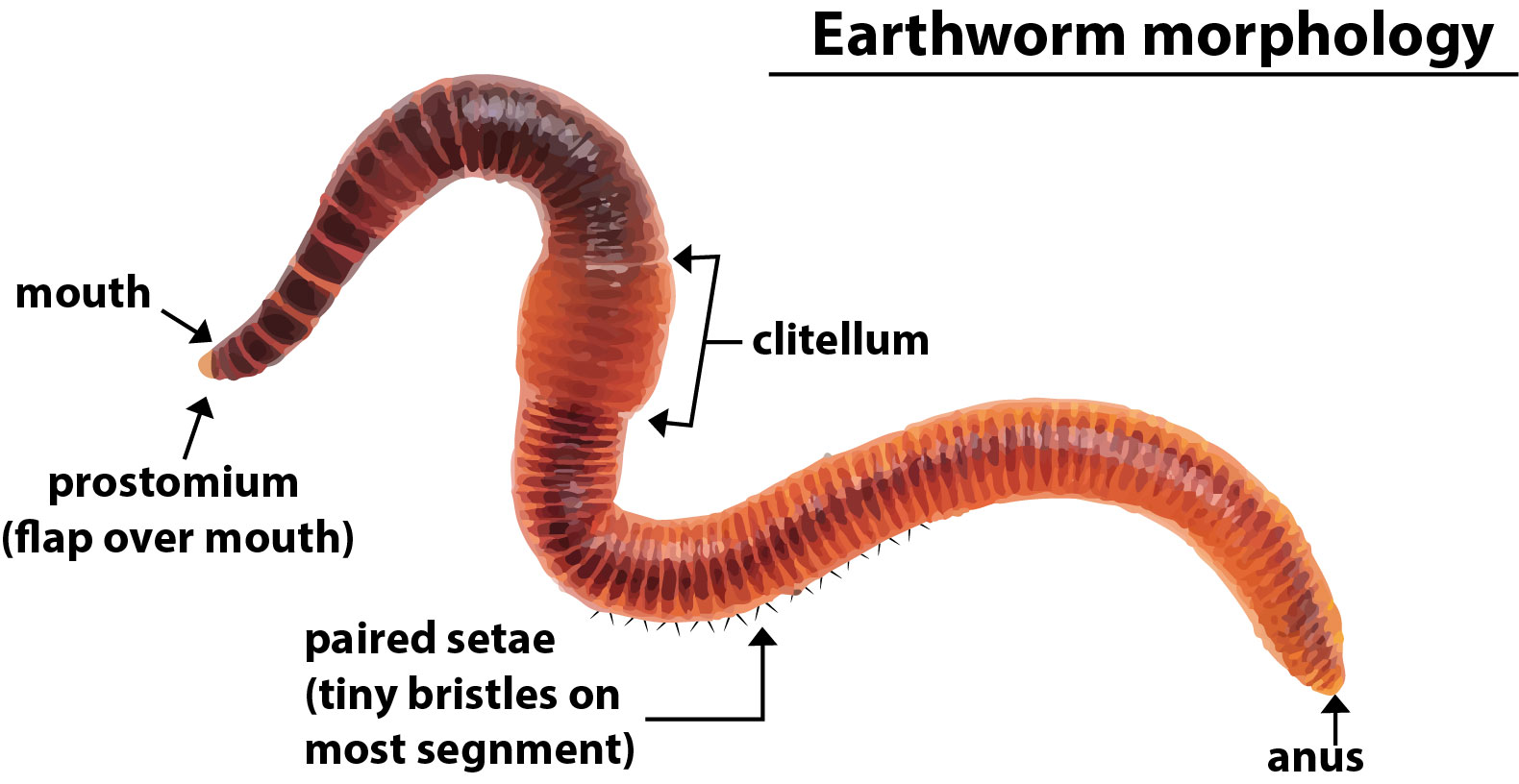
The main function of Clitellum is
(a) Cocoon Formation
(b) Locomotion
(c) Excretion
(d) Copulation
Answer
573.9k+ views
Hint: This starts after copulation when the ovary matures. A membrane is secreted around the clitellum by membrane secreting glands. Inside this one sperm gets fertilized with ova to form a zygote. The young worm is developed inside this structure and comes out after 2-3 weeks.
Complete Step by Step Answer:
The clitellum is part of the reproductive system. The clitellum is a thick, saddle-like ring found in the epidermis (skin) of the worm, which is usually a light-colored pigment. For the formation of cocoon for its eggs, the clitellum secretes a viscous fluid. The main function performed by clitellum is cocoon formation. In earthworms, the clitellum is only found when the worm is sexually mature.
Earthworms are hermaphrodite animals, i.e., each individual carries both male and female sex organs. As invertebrates, they lack a true skeleton, but they maintain their structure with fluid-filled coelomic chambers that function as a hydrostatic skeleton.

The sexual organs in an earthworm are located through segments 9 to 15. Pheretima has one or two pairs of testes that are contained within sacs. They have two or four pairs of seminal vesicles that produce, store, and release sperms via the male pores. Ovaries and oviducts are seen in segment 13 that release eggs via the female pores on segment 14, while the sperm is expelled from segment 15. One or more pairs of spermathecae are seen in segments 9 and 10 which are internal sacs that receive and store sperm from the other worm during copulation.
So, the correct answer is, ‘(a) Cocoon Formation.’
Note: Copulation and reproduction are two separate processes in earthworms. Though they are hermaphrodites, each earthworm obtains sperms from a different worm. So, each earthworm is the father to offspring of a different worm and mother to its own. This ensures genetic variation.
Complete Step by Step Answer:
The clitellum is part of the reproductive system. The clitellum is a thick, saddle-like ring found in the epidermis (skin) of the worm, which is usually a light-colored pigment. For the formation of cocoon for its eggs, the clitellum secretes a viscous fluid. The main function performed by clitellum is cocoon formation. In earthworms, the clitellum is only found when the worm is sexually mature.
Earthworms are hermaphrodite animals, i.e., each individual carries both male and female sex organs. As invertebrates, they lack a true skeleton, but they maintain their structure with fluid-filled coelomic chambers that function as a hydrostatic skeleton.

The sexual organs in an earthworm are located through segments 9 to 15. Pheretima has one or two pairs of testes that are contained within sacs. They have two or four pairs of seminal vesicles that produce, store, and release sperms via the male pores. Ovaries and oviducts are seen in segment 13 that release eggs via the female pores on segment 14, while the sperm is expelled from segment 15. One or more pairs of spermathecae are seen in segments 9 and 10 which are internal sacs that receive and store sperm from the other worm during copulation.
So, the correct answer is, ‘(a) Cocoon Formation.’
Note: Copulation and reproduction are two separate processes in earthworms. Though they are hermaphrodites, each earthworm obtains sperms from a different worm. So, each earthworm is the father to offspring of a different worm and mother to its own. This ensures genetic variation.
Recently Updated Pages
Why are manures considered better than fertilizers class 11 biology CBSE

Find the coordinates of the midpoint of the line segment class 11 maths CBSE

Distinguish between static friction limiting friction class 11 physics CBSE

The Chairman of the constituent Assembly was A Jawaharlal class 11 social science CBSE

The first National Commission on Labour NCL submitted class 11 social science CBSE

Number of all subshell of n + l 7 is A 4 B 5 C 6 D class 11 chemistry CBSE

Trending doubts
Differentiate between an exothermic and an endothermic class 11 chemistry CBSE

10 examples of friction in our daily life

One Metric ton is equal to kg A 10000 B 1000 C 100 class 11 physics CBSE

Difference Between Prokaryotic Cells and Eukaryotic Cells

1 Quintal is equal to a 110 kg b 10 kg c 100kg d 1000 class 11 physics CBSE

State the laws of reflection of light




